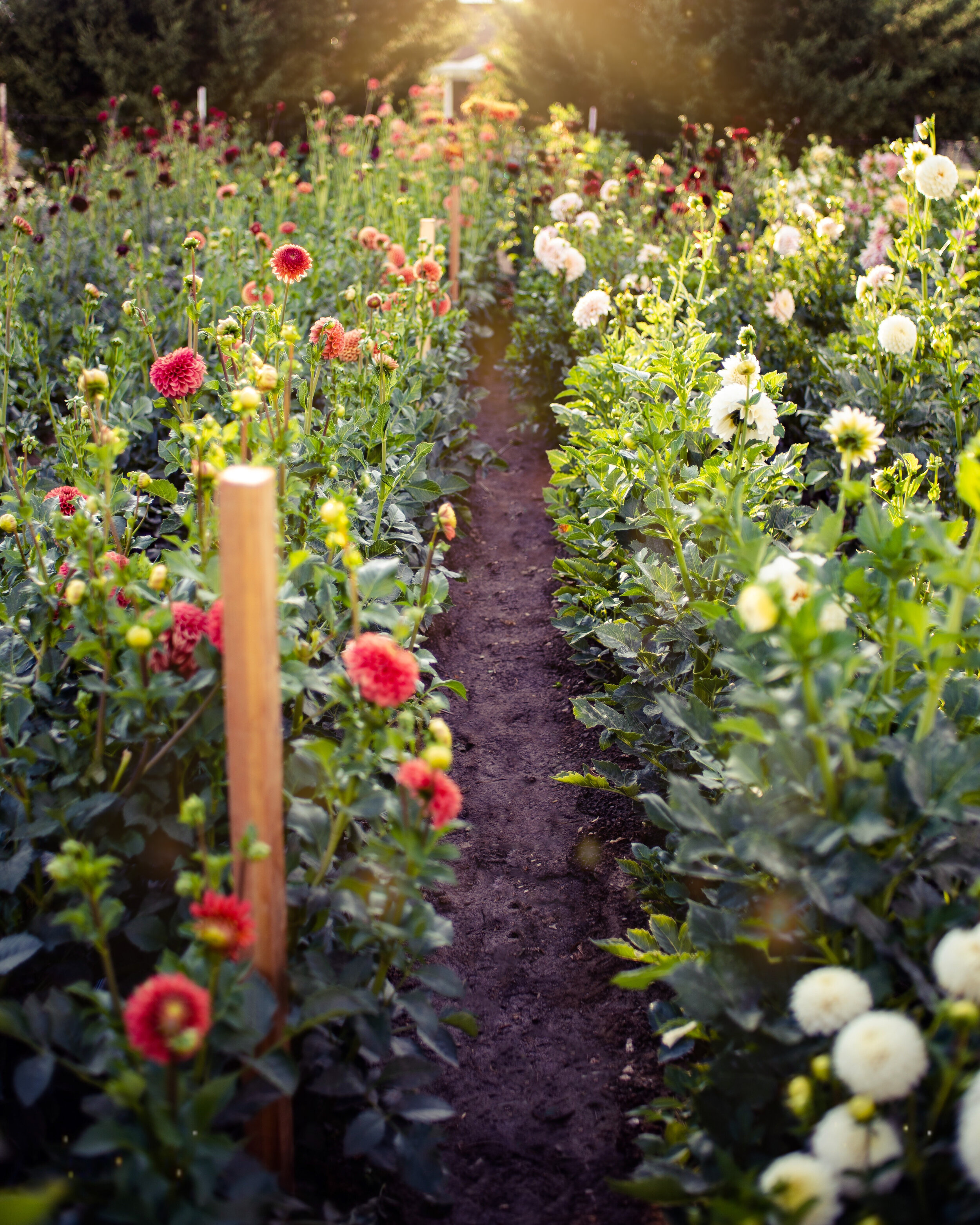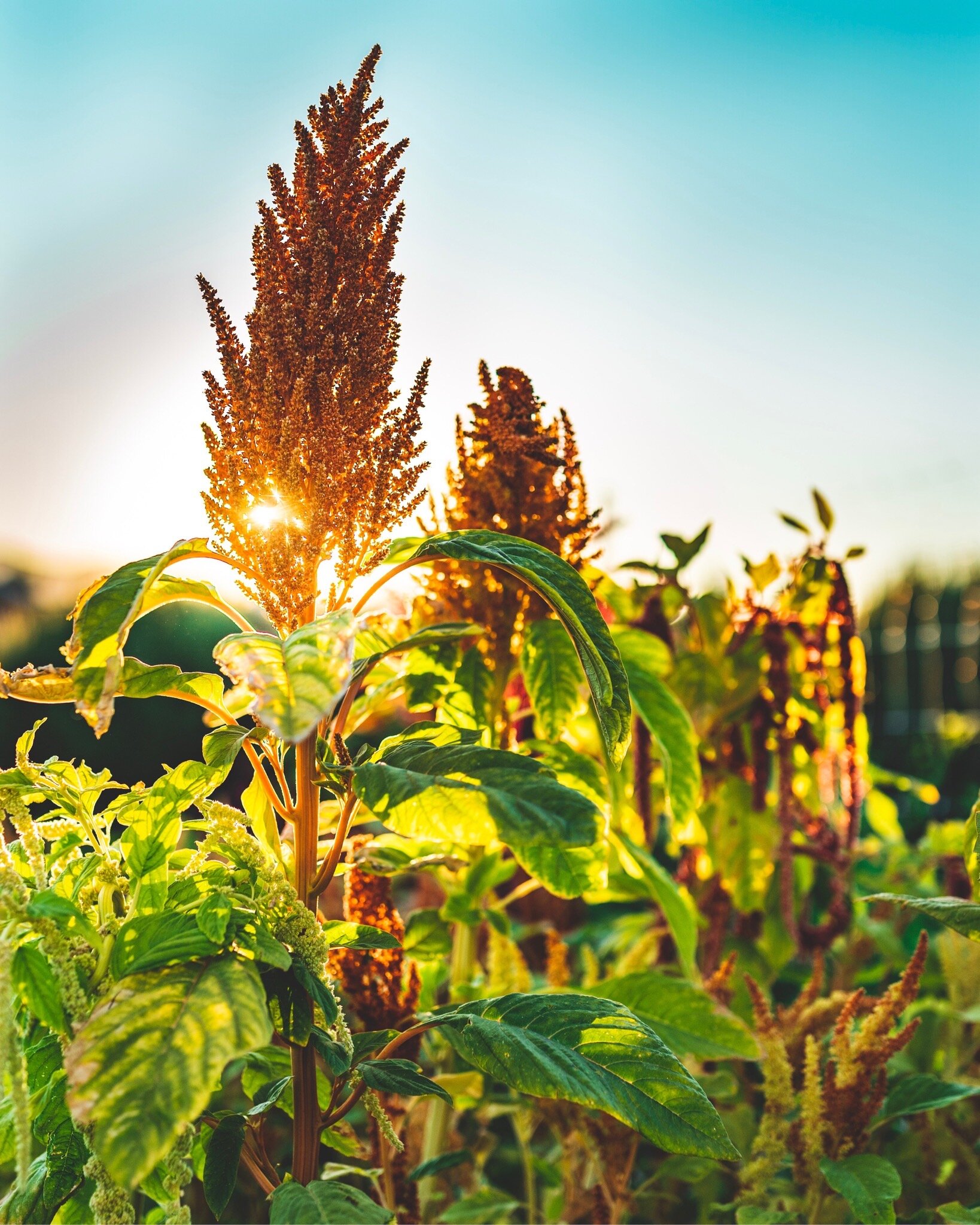Succession Planting of Annuals for the Flower Farmer
Oh succession planting… I really have a love-hate relationship when it comes to succession planting.
In the winter months it’s cute sowing the same seeds over and over again but once summer hits I am over it all at once. Sowing sunflowers and celosia every week and then the thought of having to sow seeds for fall crops in July… Bleh. It is one of those tasks that is fairly important but I find myself avoiding. If I don’t plan it out and dedicate time for it I inevitably find my self letting it fall by the wayside once we are in the thick of the season.
But you are going to be a more grown up flower farmer than me and you are going to love succession sowing and make it a priority, right?! If you are extra grown up you will have all your crops laid out with target dates to know what you need when, but hey, if you don’t I’m about to guide you through that process.
All kidding aside, figuring out what crops you want when, is the bulk of the work. Succession sowing is just going to keep you flush with premium blooms through out the season and prevent those horrid gaps.
While the basic concept of succession sowing is simple in nature (pun intended) it can be perhaps be a little overwhelming to put into practice… at first! Don’t worry though, this post should help you get a head start and set you up what you will need to keep your garden pumping out amazing blooms all season long. We are going to help you avoid being mid-summer with all your zinnias and cosmos protesting with scrawny flower heads and short stems speckled with powdery mildew. Instead, we want you to be able to ruthlessly rip those guys up without worry because the upcoming succession that you have ready to go in is bigger and better. We don’t have time to pamper crops that are just limping along. We also don’t want you to sow all your thousands of single stemmed sunflower seeds in one go and then have more stems than you can move and nothing for the remainder of the season. No gaps, no wimpy stems!
A wise flower farmer once said: dedicate a day a week to seed sowing, and it will keep the doctor away, or some thing like that… The point being though, make it a priority!
Before jumping into crop planning and your successions you should first have your budgets (financial and growing space), main product and snowball products all figured out. Hopefully you also have your seeds on hand, otherwise you’ll need to get this done so you can hurry up and get them ordered!
The good news is, once you have this all mapped out it comes down to simply refining from year to year, and you won’t be having to do this much work every year. It may come down to switching up some sow dates and varieties but overall this is the meat and potatoes.
So let’s get this crop planning stuff out of the way now to be able to enjoy the growing and harvesting part of this gig!
What even is succession planting?
Succession planting can be best summarized as sowing the same crop multiple times spaced out over a few days or weeks (intervals) throughout the appropriate growing season.
The reason we succession plant is to get high yields of quality flowers in their appropriate seasons. Sure, you could push one succession of zinnias all summer and fall but is that the best product you can produce? They do get tired and start slowing down on the yield as well as giving you funk-town flower heads, they also have a habit of getting powdery mildew. The way we get around this inevitable fate and to continue to produce quality blooms all season long in the varieties we want is with succession planting. Ripping out those free-loading plants right in time for the next succession to carry their weight.
Aside from succession planting for quality you also success sow to keep a continuous supply. Single cut sunflowers and stock are two examples of varieties that will require almost weekly sowings since they are one cut and done. Without succession sowing, you would only have these one and done varieties for a week or two as they all come into the harvest window at about the same time.
Even flower varieties that are cut and come again are in their peak production and quality for about a three to four week window. Succession planting is especially key if you are looking to sell blooms to florists or you, yourself, are a farmer-florist. Event work, especially, demands a higher quality of product that succession planting will give you.
The Basics…
There are some basic concepts to follow when it comes to succession planting but rules are also meant to be bent or broken to fit your circumstances. After all, flower farming is not one size fits all.
In warmer areas you may be able to squeeze three to four successions of zinnias. In colder climates you may be lucky to produce one or two good crops in the field. And even so, those farmers with high tunnels will be able to have more successions of zinnias in that same colder climate than those who field grow only… not that many would have zinnias in a high tunnel where you could have dahlias but that’s besides the point…
The best thing to do: is experiment. Take notes, label your successions. Keeping notes is a must overall but with seed sowing and harvesting it will lead to some valuable information that will save you money from wasting seeds or make you money by being able to have months of continuous blooms. Stunted flowers or gaps in production is not in anyone’s favor. If you are using season extension practices, such as low tunnels or a high tunnel, you should be starting those flowers a good three to four weeks before the packet states. Also, know your flowers, some flowers can handle the unexpected cold, others cannot. Some flowers will putter out on you the first eighty degree day while others will finally thrive. To learn more on this check out our video Demystifying when to seed start.
Knowing how each flower produces will also help give you guidelines of how many days or weeks should go in between successions. You have your prolific repeat bloomers, your so-so repeat bloomers and your one cut and done fellas.
The more prolific a plant is in repeat blooming, the more time you have in between successions.
Remember, if you have a one cut and done fella, you will be sowing more frequently to prevent gaps.
Planning Your Successions
What do you want and when?
First things first, you need to figure out what you want and when. You probably already have the “what” (seeds, corms, tubers & bulbs) on hand, and if you don’t you better get on it quick. Make sure you will actually have your crop in hand before spending too much time mapping it out for your season. Varieties sell out and lately their has been massive demand on the supply chain so don’t assume you will have it only to find out later, after all your work, you don’t.
The “when” is your crop target date, or more specifically the period of time you would like crop to be harvestable in (estimated harvest).
Your crop target date can get as specific or lax as you would like, you can make it a target “month” or “season” by using your last frost dates. You can get more specific week by using the target or harvest start “week” for events and such. As a caution with using the latter approach, do not promise any specific colors or crops too far in advance, ever. That is setting yourself up for stress and your client for potential disappointment.
Mapping out the first succession
Once you have your crop target date, you are going to need to figure out your seed sowing date needed to hit that target date.
To do this:
Count backwards using the days to maturity (DTM) based on the growing information for that crop and add 2-3 weeks to accommodate germination and transplant shock. That is the basic formula but It is much easier to work in weeks for the year rather than days. However the time to maturity for a crop is usually given to us in days so we are going to need to covert the DTM to WTM (weeks to maturity). To do this, I take the DTM and divide by seven, rounding up to the next whole week number. I then take the week number of my target date, subtract WTM, and subtract a couple more weeks to accommodate for that germination/transplant shock and voila! Seed sowing date! Um, well if that was poorly explained you can see my made up equation below haha! Side note: if you have a variety that takes longer to germinate you may need to bump your estimated harvest or target date.
I must say, get used to looking at the calendar in terms of week numbers instead of actual dates… it will make life so much easier as a flower farmer! To get you started Johnny Seeds has this nifty seed starting calculator and you can print out this calendar by the week number here too (you could also let it live forever on an open tab like I do!). Your wholesalers also speak in week numbers rather than calendar dates, getting a grasp on this shift in looking dates will help you in that way as well.
While we’re at it, let’s go ahead and figure out our “transplant-out” week, if applicable, based on the growing information. Just take the week number of your seed sowing date and add the amount of weeks it says to transplant. Most crops average about 6-8 weeks of growing before transplant time. Be sure to accommodate for hardening off crops, especially if you are growing these guys indoors.
(Target Week #) - (WTM or DTM/7) = First Succession Sow week
Optional: subtract 2-3 weeks from number to accommodate for germination/transplant shock.
Woohoo! You have your first succession seed sowing date, transplant date and estimated harvest date. I say estimatedl because unless you have a cool kid set up or are in the active growing season, you will rarely hit perfectly on that target date. That’s where other successions and varieties come into cover your butt! It’s nice If you can squeeze in a succession before that target sow date, but make sure the crop can still grow in the season conditions, and then also a subsequent succession as backup. This is a common tactic especially for farmer-florists who are crop planning for specific events.
Okay, you have that first succession mapped out, now what?
Let’s figure out what you want your last succession to be. This will be similar in figuring out your first succession sow date but you will be working with your average first frost date or simply the last date you are looking to have the crop for. For us, I use the last week of June for my spring crops and I typically use Mid September as our first frost date, though we can go without a frost for longer. We don’t want the last succession to merely be the crop starting to produce but rather we want it in full swing production by that frost. That way, we are not completely losing that crop before getting any kind of return. Meaning you don’t want to sow those zinnias exactly 85-90 days before your last frost, you need to give a couple week buffer.
Once you calculate this out, you will have the date of your last succession for that crop!
(First Frost date - 3 to 5 weeks) - Weeks to Maturity = Last Succession Sown date
Now that we have our first succession and last succession, let’s get to figuring out those in between successions. First, we need to get an idea of what succession intervals we need for which crops.
Prolific Repeat Bloomers (the overachievers!)
These guys are the rockstars in the garden. They will carry you through, especially if ooops (you forgot to sow some celosia cristata that one week). For the most part, these guys can be succession sown every 3-4 weeks for optimum blooms. If you’re like me, life happens and sowing does not always. If you can aim for at least two successions for each flower in their corresponding season, you are off to a good start.
Some examples of overachievers are sweet peas, ranunculus, ammi, dahlias, zinnias and bachelor buttons.
We also have some nifty charts below with examples of each type of bloomer in their corresponding seasons towards the end of this post.
The So-So Bloomers
These guys typically don’t have you rushing out to harvest twice a day in their peak but will give you more continuous stems. Also, these guys I find tend to come in flushes which may not have you needing to rip the plant out as often as the prolific blooming varieties but you will want have other successions to pick up on each other’s slack throughout the season.
We typically success sow these varieties every 4 weeks. Knowing that they don’t give as much output as those over achieving bloomers, we plant out more quantities of these fellas.
Some examples of the so-so bloomers are amaranth, bells of ireland, snapdragons and bee balm.
One cut and done fellas
I love sowing these one cut and done fellas in the beginning but get a little over it after weeks of sowing them throughout the season - haha! These are the crops that you get one flush from. Once you cut them… they are done! There are some varieties that one seed equals one stem. Such as celsosia cristata, stock and single stemmed sunflowers (such as pro cut). There are other varieties that you can get more than a single stem, though once they are cut they will not output new growth such as nigella, agrostemma and seeded cress.
Depending on the variety, we typically success sow every 7-14 days. The trick with the one cut and done fellas is definitely mapping out your rows to make sure you have the space to be continuously planting these varieties out.
Wow! Simple, right? You could basically throw your successions into two categories: monthly sowings or the weekly sowings. Easy peasy.
Mapping out your successions
To figure out your successions go ahead and take your first sow week number for the crop and add the number of interval (gap) weeks to that and you will get your next succession sow week number, yay! Just to be clear we are working with sow dates, not germination dates. That’d make it way too complicated to map out ahead of time. Once you have your second succession week number, keep on going until you hit that last succession date. Don’t forget to map out transplant dates, unless you are direct sowing. Honestly, this part of the crop planning just becomes a lot of copy and pasting!
This is where working in weeks rather than days makes life a breeze. Let’s say your sowing sweet peas week 1, your interval is 4 weeks which lands your next succession at week 5.
Example:
(first sow week #) + (# of harvest weeks) = second succession week
Week 1 + 4 = Week 5
(Second sow week #) + (# Of Harvest weeks) = Third Succession
Week 5 + 4 = Week 9
I prefer to select the entire row with the crop I am working on within the spreadsheet, copy and then paste down to the next succession week number. It goes fast, especially since we’re working with simple numbers. I then double check any events to go with my estimated harvest date for the succession, take notes of imperative varieties, update that transplant week date with growing notes relative to that crop and time of the season, etc. It really is a fairly simple process, and come the thick of the season it will be nice not having to think on it anymore- just putting those seeds to soil! Bonus for being able to sort the individual columns by variety, sow date, transplant date or estimated harvest date to give a quick snapshot of what’s planned for the upcoming season relative to those particular categories.
I recommend keeping your spreadsheet for crop planning relatively clean, go ahead and make notes of any growing information but I wouldn’t muddy it up with each individual color or variety. Meaning, keep it simple with “Snapdragons” then list variety in separate column instead of listing: “Snapdragon, Chantilly Bronze. Snapdragon, Chantilly white. “ Get what I’m saying? Keep a separate spreadsheet if you want listing all your potential varieties but keep this particular one to the actual crop planning process and make it simple on yourself.
Now, I personally love getting nerdy with the spreadsheet… okay perhaps not super into the formula part (that’s all Graham) but I do love seeing all the crops beginning to come together! If you don’t have time to really sit and figure out your own spreadsheet and successions or perhaps it is too overwhelming during your first year of flower farming Johnny Seeds also has a Succession Calculator. It is a decent starting point but you will ultimately be revisiting and creating your own to fit your crop planning and business needs. Plus… it doesn’t have much for flowers so you still are doing much of the work yourself! Don’t be afraid to dive into this yourself and really… work in week numbers!
Season Examples of Varieties and their crop intervals
Some things to keep in mind while crop planning successions:
Last frost date (frost range)
Increasing temperatures and daylight hours as summer approaches
Decreasing temperatures and daylight hours as summer fades
First frost
Growing bed space
Enough quantities to be able to harvest and sell efficiently
Succession Planting
This is a whole other game, honestly it is pretty easy to come up with sow dates, it’s a completely different story actually having bed space available to plant them in, especially for small scale growers.
Watch how many seeds you start for a succession. A typical rule of thumb is the amount of plants you are planting + 20% to cover varying germination rates or some kind of whoops moments.
If you can plant entire rows of one succession of crop or a row of crops that will be finishing up at the same time, I would suggest that! If you know you will have crops all season long, keep them grouped together. For example, foxglove, bells of ireland, dusty miller and strawflower are all crops we keep all season long- they live happy together. It can get tricky and we have played many years where we replanted blocks within a row (to Graham’s horror).
A typical rotation I would have early spring rows go to summer rows. Mid spring rows go to fast growing summer crops. Late spring rows go to fall/fall planted crops or cover crop. This will really depend on your crops, your season length and how much you are winning at life by getting those beds turned over.
Really think about the quantities you need to fill your orders that will also allow you to work efficiently. Also, if a certain crop is susceptible to disease or insect pressure, I try not to plant subsequent successions of that variety near the new batch. They will just share their cooties and we don’t want to deal with that, do we?
To help you figure out how many seeds to start, here we go with Johnny Seeds again (they sure have been busy!) with their seed quantity calculator. It is also fairly simple to create one in your own spreadsheet using those fancy formulas as well but unless I get a batch of seed with unusually low germination rate, I just stick with planting that extra 20%.
Final thoughts
Not all crops benefit from succession planting
Taking out consideration of perennials, there are some annuals that may not benefit much from succession sowing. Lisianthus can be one of those examples. This is where purchasing Lisianthus with different bloom times is beneficial. We also grow eucalyptus as an annual, it takes a while to get going and doesn’t mature until late summer for us, therefore it is not worth growing in multiple successions. Typically, if they are very slow growing skip the successions. Rather, opt for different varieties and sowing larger amounts in that one succession for those slow growers.
Advice for the first year flower farmer
Keep your crop successions simple your first season. Building your market and getting into the groove of your first flower farming season comes with a lot! If possible, stick with crops that are those prolific repeat bloomers and some so-so bloomers, keep those one cut and done fellas at a minimum if you can. If there was one crop (or two) I would recommend from the one cut and done would be nigella for spring and single stem sunflowers (especially if you are unable to invest in enough dahlias for your first season). Staying up on harvesting, planting, maintenance, selling and marketing will fill your plate in peak season. Crops that are not dependent on frequent sowings can get you through those couple busy months. Also, forgive yourself if you miss a succession, it’s not the end of the world!
This tip is so important I am going to say it again: never promise a specific flower at a specific time to any customers, even florists can’t make those kind of promises! Don’t do that to yourself!
Well… I do believe you have some work to do, and so do I! Now that I have the flowers all mapped out, I am moving onto the vegetables for this season which are even more one and done crops! Hopefully this helped you to wrap your head around succession sowing. Have fun with it, this is beginning to piece together all your crop offerings for the season. Be thorough now so you have the luxury of not having to puzzle your way through it in peak season. Now is also a good time to make sure you have all your seeds and enough on hand to fulfill your successions, otherwise you need to look at ordering more to have them ready to go.
Happy Crop Planning, and as always…
We are looking forward to helping you hand blooms soon!
Jessica & Graham
SHAMELESS PLUG!
FLOWER FARMING BUSINESS
Flower farming is a journey. For all the dreamers and fellow flower farmers, let’s get down into the business side of flower farming!


















